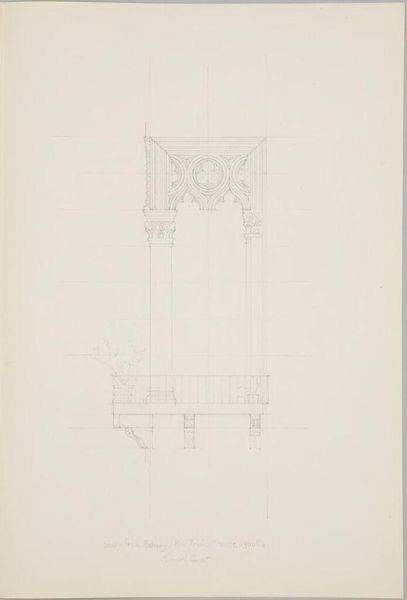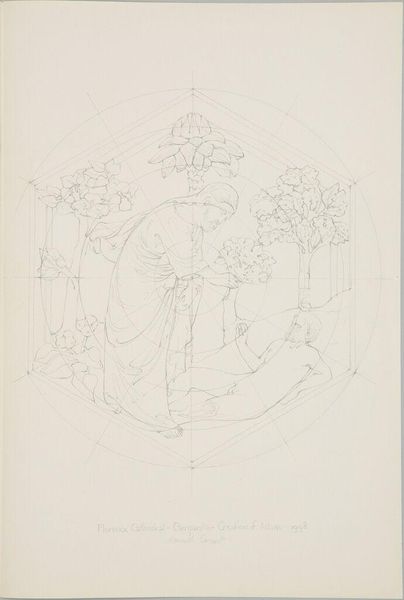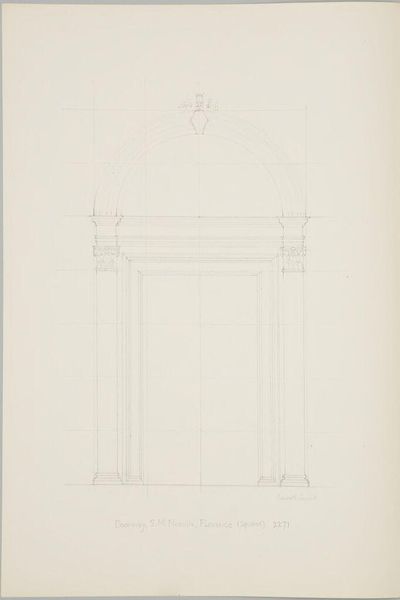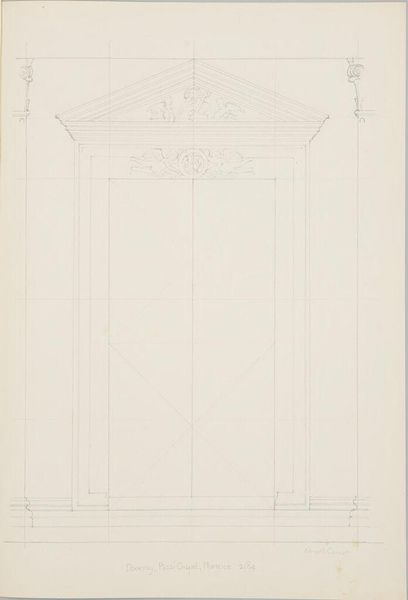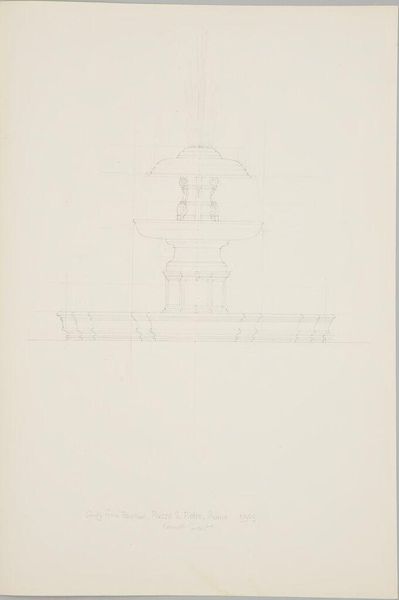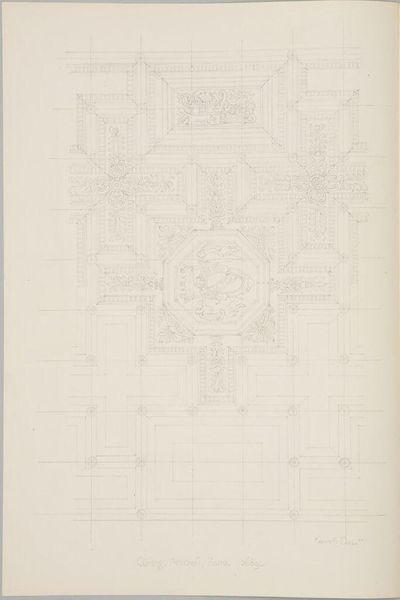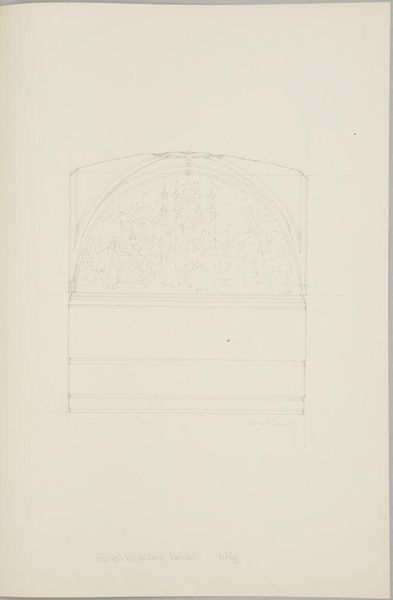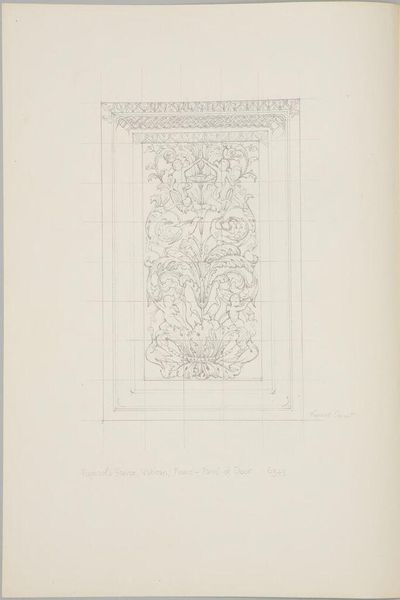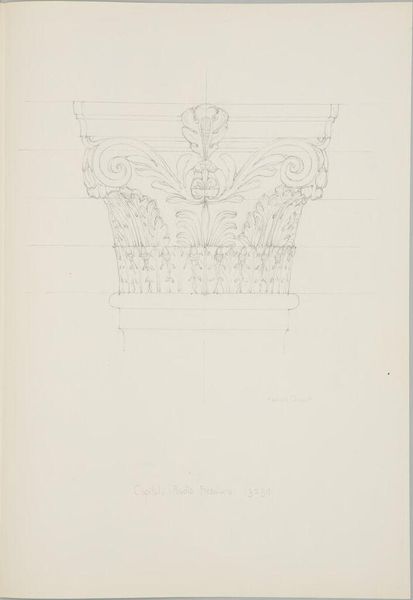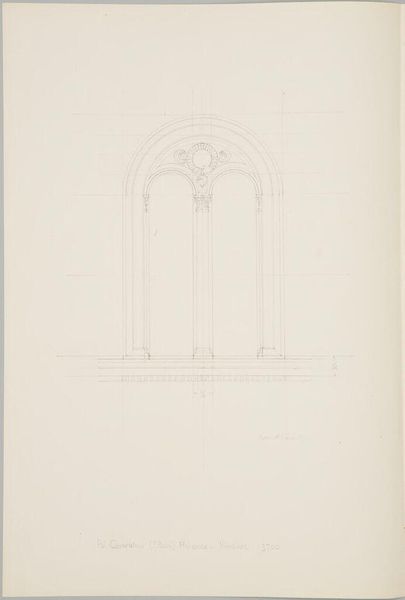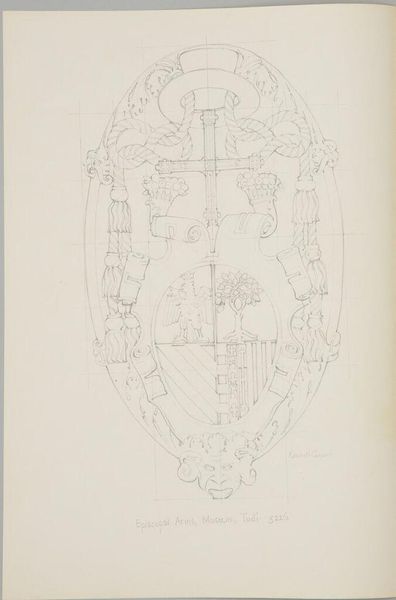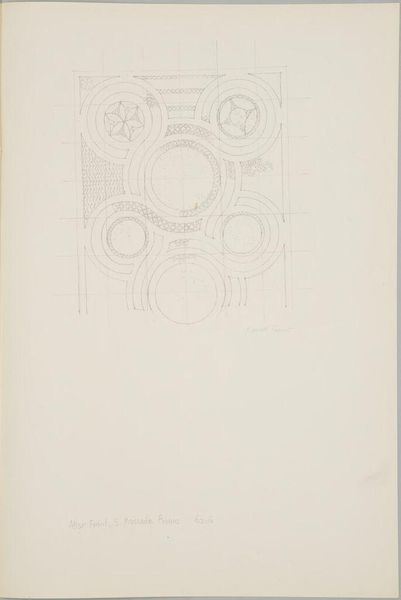
Detail of Jubal, after Andrea and Giovanni Pisano, Campanile, Florence Cathedral, Florence, Italy c. 20th century
0:00
0:00
Dimensions: image: 20.3 cm (8 in.) sheet: 31.1 x 42.2 cm (12 1/4 x 16 5/8 in.) folded sheet: 31.1 x 21.1 cm (12 1/4 x 8 5/16 in.)
Copyright: CC0 1.0
Curator: This is a drawing by Kenneth John Conant, titled "Detail of Jubal, after Andrea and Giovanni Pisano, Campanile, Florence Cathedral, Florence, Italy." Editor: It feels unfinished, like a blueprint, or maybe the ghost of something grand. Is Jubal playing an instrument? Curator: He is. Jubal is a biblical figure often credited as the father of all who play stringed instruments and organs. The original sculpture is part of the Campanile at the Florence Cathedral. Editor: So, Conant is capturing a sculpture of a mythic musician. I wonder what drew him to this particular detail. It has a quiet dignity. Curator: The early 20th century witnessed a surge in interest in medieval art and its influence on social structures and identity. The figure of Jubal, in this context, symbolizes the intersection of faith, culture, and artistic expression. Editor: I see it now—it's a meditation on origins, on the stories we tell about where art and music come from. Curator: Precisely. By focusing on this detail, Conant invites us to consider the foundational narratives that shape our understanding of art history. Editor: There's a tenderness in the lines that makes me think of the dedication it takes to master an instrument, tracing something back to its source. Curator: Indeed, a reminder of the power of art to connect us to the past, shaping our present and future.
Comments
No comments
Be the first to comment and join the conversation on the ultimate creative platform.
